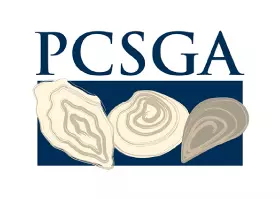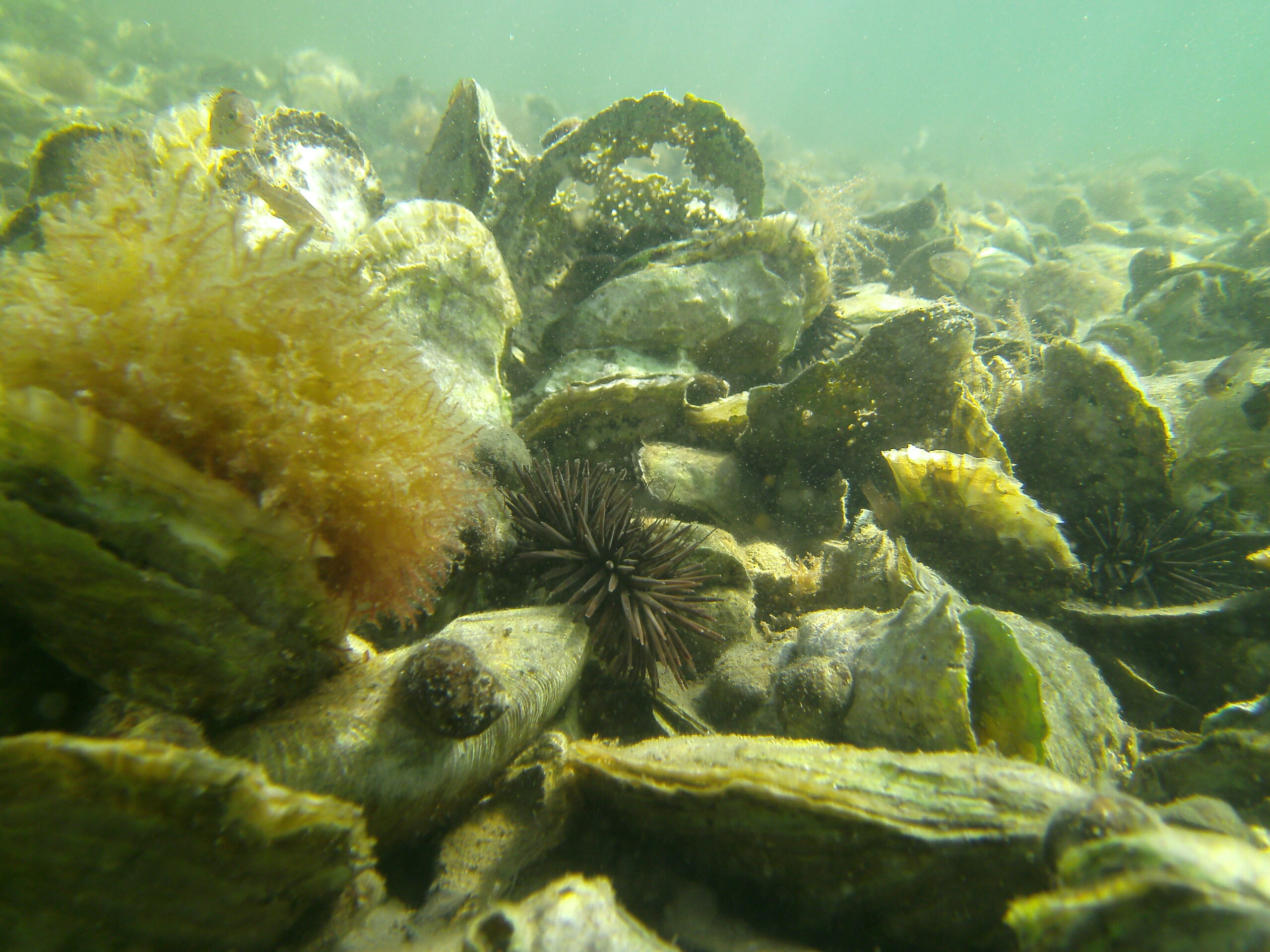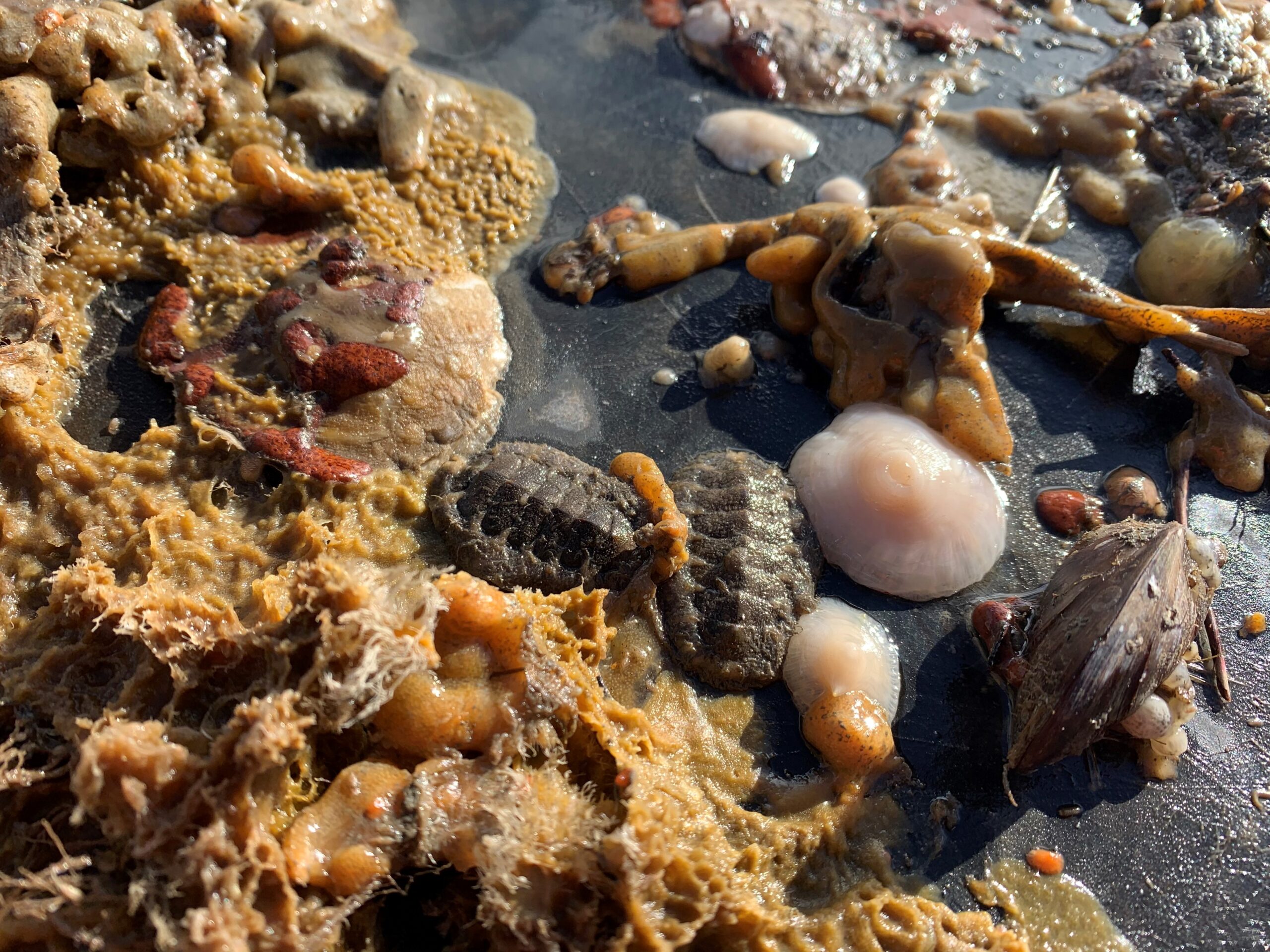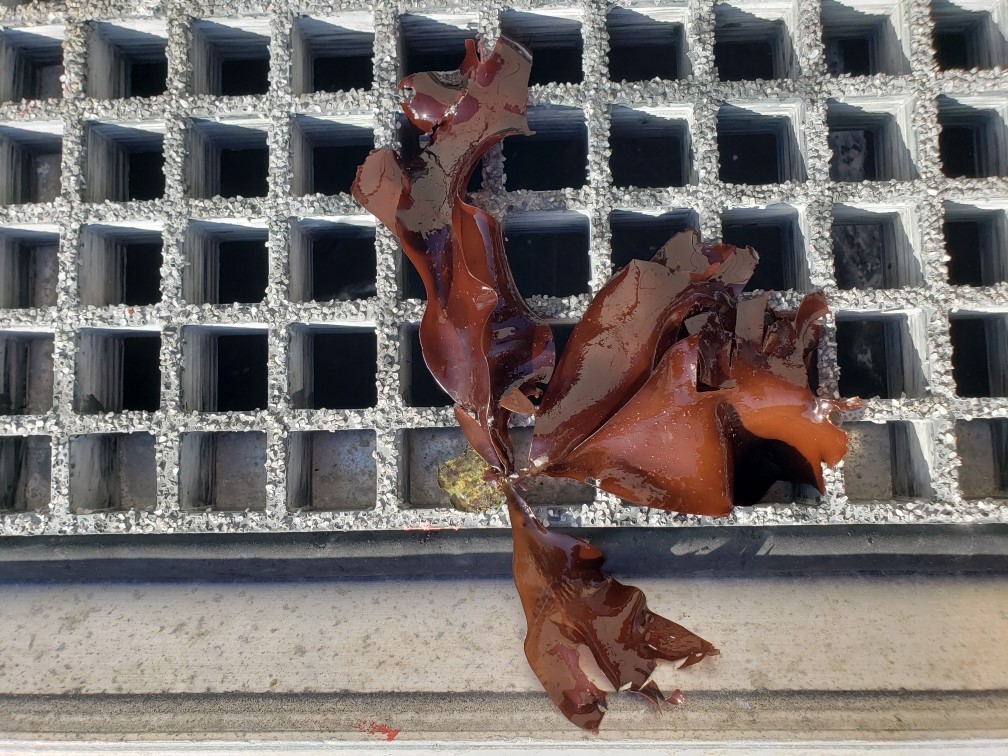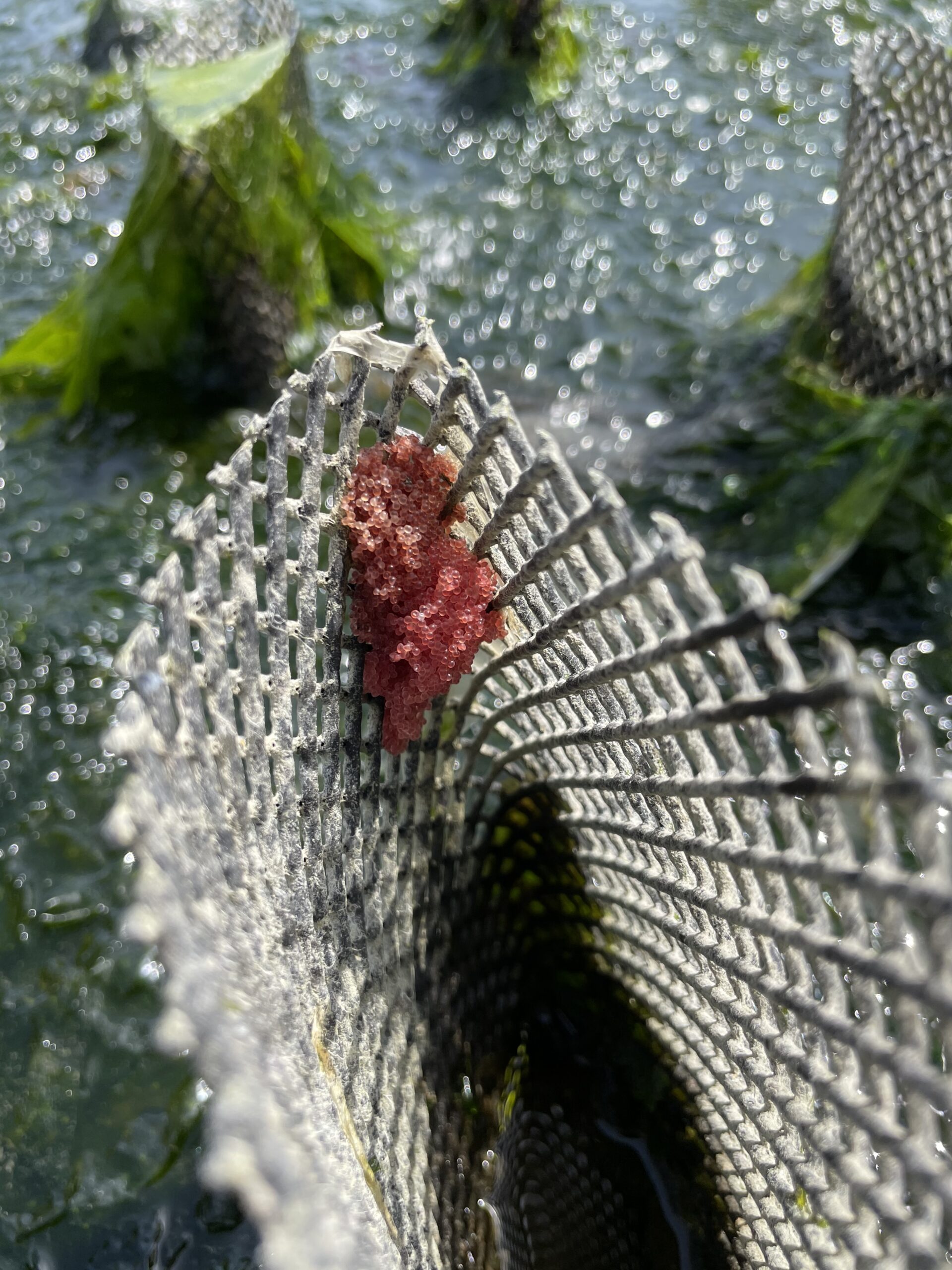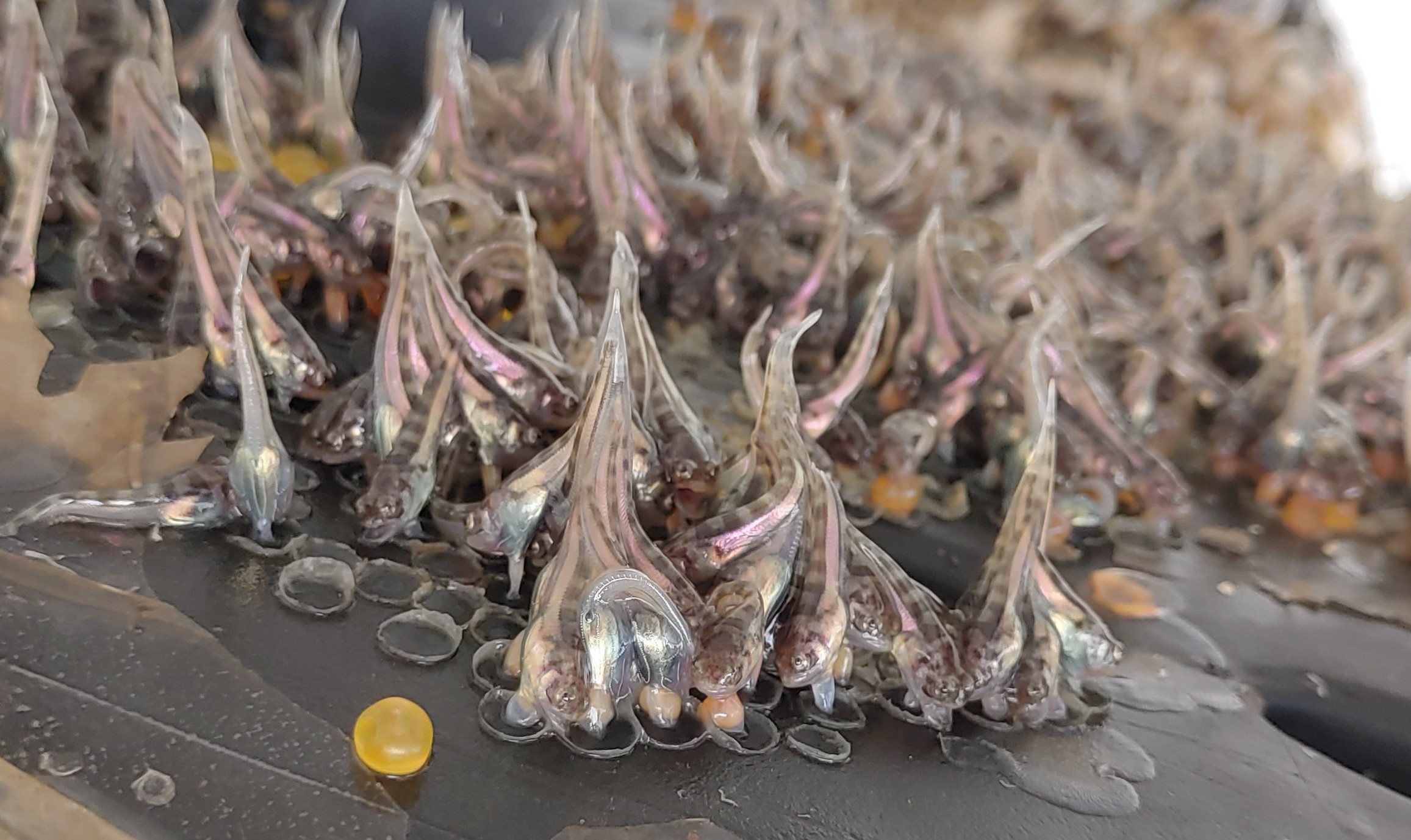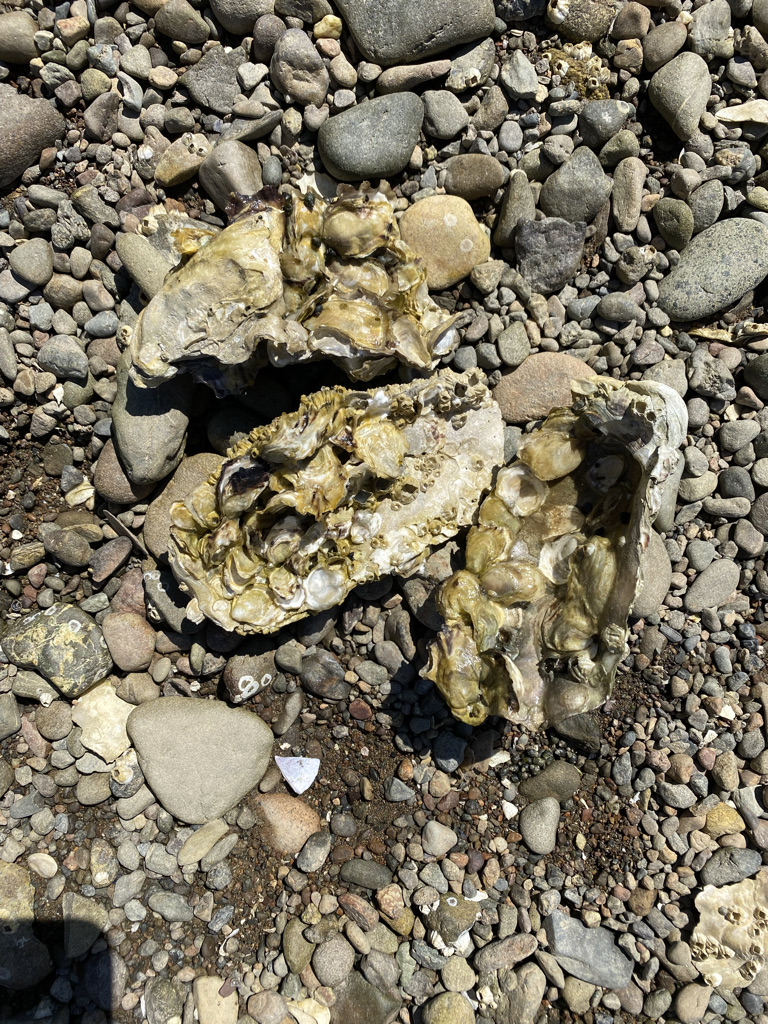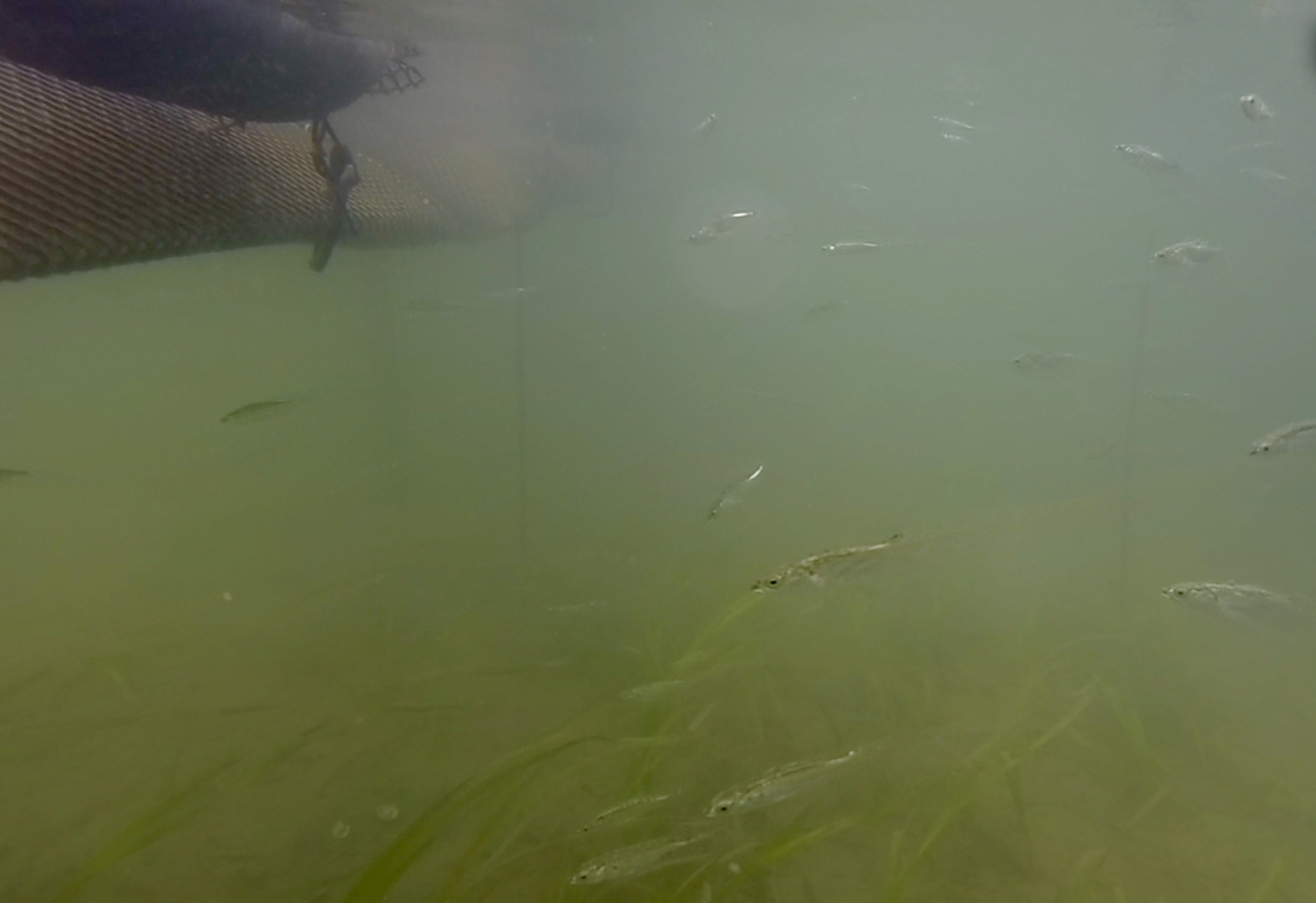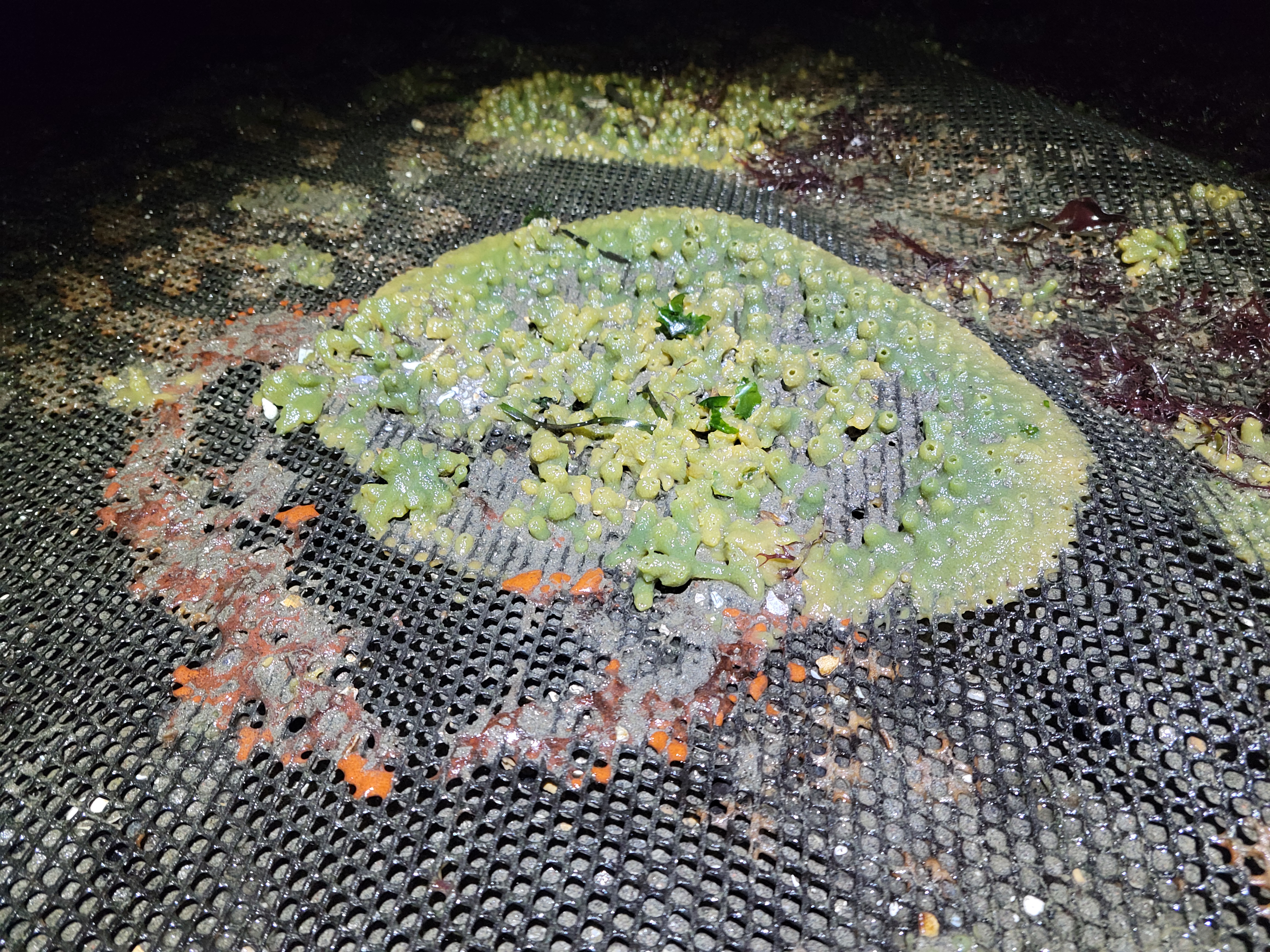Jan 2021 Winner Matt Griffin
Matt Griffin: Resorted oyster reef in Great Salt Pond, Rhode Island providing excellent habitat for juvenile cunner and purple sea urchins.
Feb 2021 Winner Andrew Johnson
Raft floats for oyster wet storage provide nurseries for important invertebrates such as marine chitons pictured here, as well as habitat for a whole host of sponges and mussels that help filter the water.
April 2021 Winner Rebecca Richards
FLUPSY at Tuna Harbor in San Diego providing safe harbor to Palmaria and attached Olympia so both can tend to their water quality cleanup jobs.
May 2021 Winner Nyle Taylor
Time and time again I witness nursery tubes protecting more than just the geoduck planted within. This is an image of Sculpin Eggs within a mesh tube on Harstine Island. It is common to find cockles, horse clams, small crab and more taking refuge within the nursery tubes. Sculpin eggs are another example of how many species take advantage of the temporary placement of these tubes to increase their rate of survival.
Aug Winner Lisa Carleton-Long
Midshipman love to use our Cultch seed bags and pallets out in the bay as their nursery. Parents seek refuge to set their eggs and the hatchlings have a safe environment to grow up in. Wikipedia: “Mating in midshipman fishes depends on auditory communication. Male midshipman fish produce several different vocalizations while females only make grunts in non-breeding situations.” This is why I call them GRUNT FISH!
Oct Winner Dan Hanson
Three- to four-year-old oyster shells caught a hefty wild set of spat on Bald Point in Hood Canal this summer. The calcium rich discarded shells provide an ideal substrate on which microscopic new oyster larvae can attach. This occurs two to three weeks after the broodstock oyster spawns. When larvae attach to a substrate such as this they are barely visible to the naked eye. The spat in this photograph are probably about two to three months old.
Nov Winner Fiona Boardman
This photo was captured by one of our GoPro cameras that are used to study how fish use eelgrass & oyster aquaculture habitats (funding from PSMFC). Especially during the summer, we often see schools of threespine stickleback (pictured here) and perch, swimming through oyster flipbags. Many fish species use the structured habitats provided by seagrass and oyster culture as nursery habitat to feed and seek refuge.
Dec 2021 Winner Bill Dewey
Predator exclusion nets over manila clams provide a substrate for many plants and animals to grow on. In Samish Bay the bread crumb sponge (Halichondria panicea) is abundant on nets in the winter time. The sea lemon nudibranch is often seen grazing on the sponge, its favorite food, and laying egg masses on the nets.
